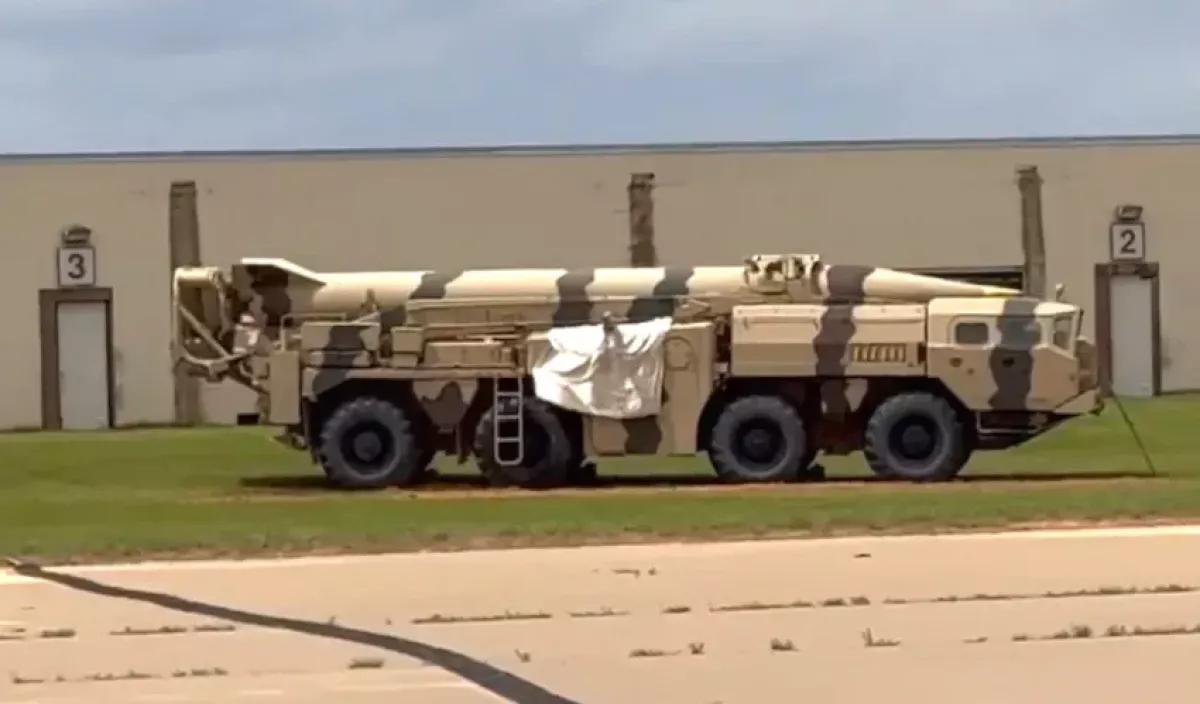Containerised firepower: US experiments with hidden long-range missile platform Details by TWZ
A previously unseen container-based missile launch system — capable of firing a wide range of munitions used by the M142 HIMARS and M270 MLRS — has been spotted undergoing tests at a US military base, according to The War Zone (TWZ).
The unusual launcher was revealed in footage of US President Donald Trump's recent visit to Fort Bragg, North Carolina. During the visit, a missile was launched specifically for the president, but the system used for the launch did not match any known models. "A separate launcher, the type of which is not yet clear, was used to fire these shells," TWZ noted in its report.
The system appears to be housed inside a standard shipping container with a hinged roof. It can accommodate either two conventional rocket pod units (each carrying six 227mm rockets), a single ATACMS short-range ballistic missile, or two Precision Strike Missiles (PrSMs). The base version of the PrSM currently has a range of 500 kilometres, with future variants planned to extend that reach to as much as 1,000 kilometres. The US is also developing an anti-ship version of the PrSM.

The containerised design offers significant flexibility. It can be mounted on truck trailers, ship decks, or even rail cars, and its civilian appearance makes it easier to conceal from enemy surveillance. This camouflage potential, presenting as an ordinary cargo container, adds an element of ambiguity that complicates adversary targeting decisions. TWZ emphasised the growing value of such concealment in modern warfare, citing Ukraine's recent use of covert drone strikes on Russian airfields as a powerful example.
In terms of performance, current-generation 227mm artillery rockets can strike targets up to 80 kilometres away. A newer variant entered production last year with a range of 150 kilometres. The most extended-range version of the ATACMS can hit targets up to 300 kilometres away.
The first iteration of the PrSM — known as Increment 1 — reaches 500 kilometres, with future upgrades potentially extending the range to 1,000 kilometres or more, at which point it would be classified as a medium-range ballistic missile. The Army also plans to develop enhanced PrSM variants featuring new seekers for anti-ship roles and payloads, including miniature guided bombs or kamikaze drones.
In addition to experimenting with new ammunition types, the US Army is exploring launchers with increased magazine capacity, such as pods carrying smaller rockets. Although these would reduce range, they would allow for a higher volume of fire. The Army is also testing new launch platforms—including unmanned systems and larger launchers—that can deploy the same family of missiles and rockets.
As TWZ points out, other nations such as Russia, China, and Iran are also investing in containerised missile systems. In parallel, the US Navy has already begun deploying its own version of a containerised launcher. This launcher, based on the Mk 41 Vertical Launch System (VLS), is designed to fire Tomahawk land-attack cruise missiles and SM-6 multi-role missiles, and is compatible with both shipboard and ground-based Typhon systems.
By Tamilla Hasanova








